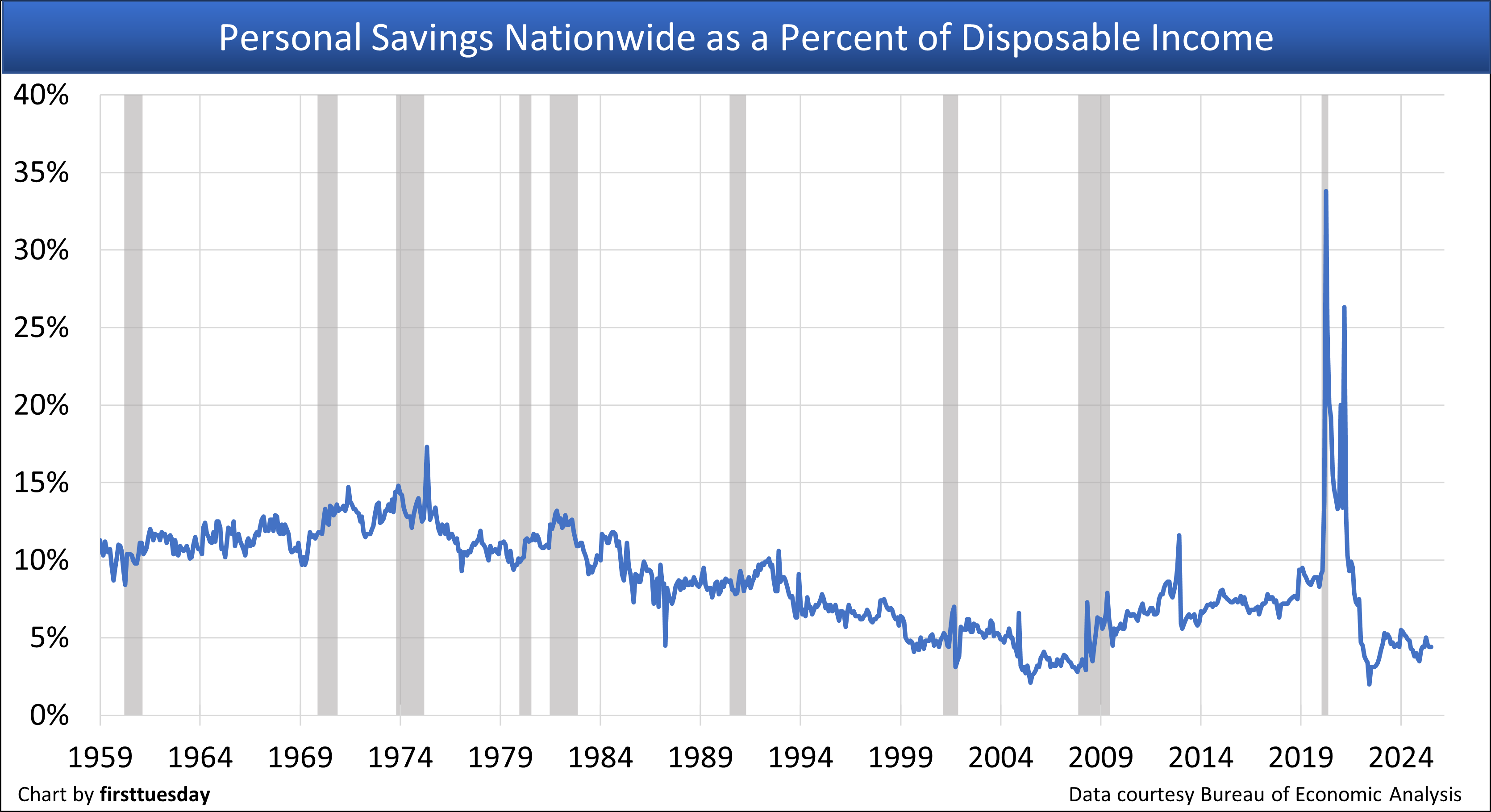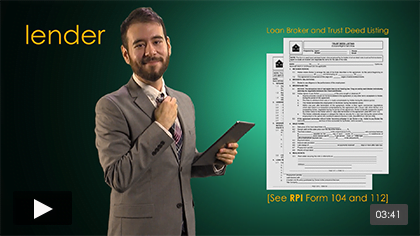Why this matters: Over the last few decades, personal savings nationwide diminished, only increasing during recessionary periods when consumer confidence fell. The lack of consistent savings leaves households ill-equipped for emergencies much less a down payment to buy a home, challenging agents and brokers to earn fees by preparing buyers and guiding them through the purchase process.
Preparing your rainy day fund
The rate of savings, which is the amount of disposable income a person sets aside annually, can increase cash reserves for big purchases like the down payment on a property. Stockpiled funds are not just cash waiting to be spent. It is a way to transform personal income into greater wealth when a buyer uses their cash to make a meaningful down payment and save significant amounts of money for other uses over the life of their mortgage.
The national personal savings rate, as seen as a percentage of disposable income, is inching back up from 2022’s decade-low 2% rate, at 4.4% in July 2025. An 8% to 10% portion of monthly income set aside as savings makes job holders more economically viable in the future. Savings comprise a reserve sufficient to meet emergency expenditures, plus a further buildup of cash to improve the household’s standard of living, mitigate financial stress and possibly opt to buy a home with more than 20% down — all solvency issues perplexing the typical job holder.
Looking at the national disposable income, setting aside 4.4% only amounts to an average of $2,908 saved annually. This is not enough to create an emergency fund, where individuals should aim for three months of necessities set aside for emergencies such as sudden job loss, medical needs or vehicle breakdown.
In 2022, the savings rate plummeted by necessity, as households struggled to make ends meet under pressure of the highest consumer price inflation since 1980. In the years of covid-era volatility, savings jumped to a record 34% of disposable personal income in April 2020, driven by the first round of stimulus payments, which many put directly into savings.
In retrospect, savings bottomed near 2% in 2005 when consumer confidence was high on Millennium Boom fumes but moved to above 5% in the recovery following the 2008 recession.
Here in California, the room for saving is even narrower due to our higher cost of living. While the California savings rate is not available, it is lower than the national average. This disparity further chips away at the ability to accumulate savings sufficient to cover emergencies, let alone enough for a down payment on a home.
Savings to continue?
Looking ahead through 2025 into 2026, Californians will continue to rein in spending as consumer confidence drops in anticipation of fewer jobs, an issue of business uncertainty. Further, the current international trade and migration chaos may bring on widespread job losses and consumer price inflation as asset classes all lose value in 2026.
Worse, federal stimulus payments to individuals in the coming recession are not likely to take place as occurred in 2020 to buoy personal income and business operations, unless income tax rates are raised for high-end income brackets.
Watch for job losses triggered by economic uncertainty over the tariff-induced trade war, a killer of economies large and small until they work their way through the pricing of consumer goods. The deterioration in 2026 of job opportunities and inflation increases will bring on more savings and less spending by wage earners.
However, the trade war presently being fought is a significant interference with the ability to ascertain just when the coming economy-wide recession will likely be declared as official, much less a recovery. But an increase in savings by job holders does result from general uncertainty about the economy.
Updated September 24, 2025. 
Chart update 9/24/25
| 2024 | 2023 | 2022 | |
| Annual average personal savings rate | 4.5% | 4.7% | 3.5% |

Chart update 9/24/25
| Q2 2025 | Q1 2025 | Q22 2024 | |
| Personal Savings Rate | 4.6% | 4.3% | 4.9% |
Data courtesy of United States Department of Commerce: Bureau of Economic Analysis
Gray bars indicate periods of recession.
*Data averaged through December 2024.
As mortgage rates trend higher in the long term, a cyclical process beginning in 2013, real estate demand is driven by how much money potential buyers save. What does this mean for future home sales?
Trends in saving
The 20% down payment, or more, was once the loss-mitigating gold standard of residential mortgage originations. During the fevered years of the Millennium Boom, the standard became a quaint novelty, brought on by deregulation of the mortgage origination bankers on Wall Street. Buyers (and lenders) got used to the easy days of purchasing a home with 0% down, and closing costs were either seller-paid or mortgage-lender financed as piggy-back second mortgages.
Unsurprisingly, this was reflected in the personal savings rates of the millennium period. However, from 1952 to 1990, personal savings as a percentage of disposable income were around 8-10%, according to the Federal Bureau of Economic Analysis (BEA). During the Millennium Boom, savings dropped to nearly 0%, a 50-year low.
However, the 2008 Great Recession ushered reality back through the front door. The 1,100,000 California homeowners who suffered the trauma of the great recession housing crash through foreclosure or short sales and forced to be tenants fast found wisdom in stockpiling cash. The personal savings rate leaped up to 6% within a year.
The personal savings rate was at 4.6% in Q2 2025, over double the 2022 low, but still down from the same quarter a year earlier in 2024.
As we head through the current undeclared recessionary period, expect to see a greater reliance on savings emerge, with households saving when possible to cushion themselves from the expected economic turbulence of a recession. When consumer confidence is relatively low, personal savings rises. A financial “comfort zone” is accommodated either way, until it isn’t.
Related article:














